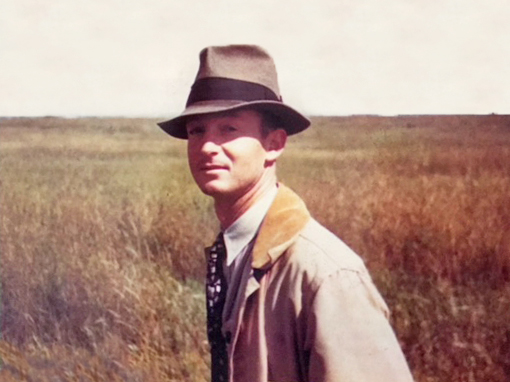Field trials have brought me priceless friendships. Among the most cherished was with Ed Mack Farrior and his lovely wife Floyd. They arose from an invitation to report and later judge the National Amateur Free-For-All Championship at Union Springs.
Mr Ed Mack was a close friend of my fellow Virginian Parke Brinkley who provided me an introduction. When I went to Union Springs the second time the Farriors invited me to stay in their lovely home, referred to in Mr. Ed Mack’s memoir as “the House that Mack, Doc and Sam built” (Evergreen Jersey Mack, Doctor Blue Willing and Air Pilot’s Sam, big winners for Edward Farrior who built the house).
Because the Free-For-All did not run on weekends, this gave us a Saturday to drive around South Alabama and visit places dear to Mr. Ed Mack and as it turned out to me.
We started by driving to Letohatchee where Mr. Ed Mack showed me the boyhood home of his father. Along the way he pointed out several large cattle farms owned by his Farrior ken. Then we drove to Selma where we visited a Blevins (my mother’s family) burial site a few miles from town where some of my early ancestors were buried, including two John Blevins, father and son, the father a veteran of the Revolutionary War, the son of the War of 1812, their grave sites so marked. Then we visited Jimmy Hinton’s Sedgefields where Mr. Ed Mack had worked with Clyde Morton before World War II. Listening to him talk about those days was fascinating.
We visited the manor house and the monument marking the burial site of the Sage-Morton Champions, most of whom Mr. Ed Mack knew first hand (he describes them in his marvelous memoir), the horse barns and dog lot and the cottage where Man Rand had lived, the cottage sadly vacant and in disrepair.
Then we drove to Marion Junction where my maternal grandmother, Ethel Blevins Privet, and her father, Dr. John Faulkner Blevins, who served as a physician in Law’s 44th Alabama at Antietam and other Civil War battles and afterward practiced medicine in Selma until his death at the turn of the century are buried in a churchyard. Finally, we drove to the homesites of Chesley Harris and his brother-in-law Prather Robinson below Montgomery (I would later judge a trial there with Luke Weaver for Mr. Hoyt Henley who owned the Robinson training grounds).
To call that day memorable and my time with Mr. Ed Mack priceless would be an understatement. While well into his 90s, his memory was clear in every detail and his sense of humor marvelous.
On his death he suggested that his daughter offer me his and his father’s collection of Field Dog Stud Books, a treasured possession which resides in the book case in my dining room.
